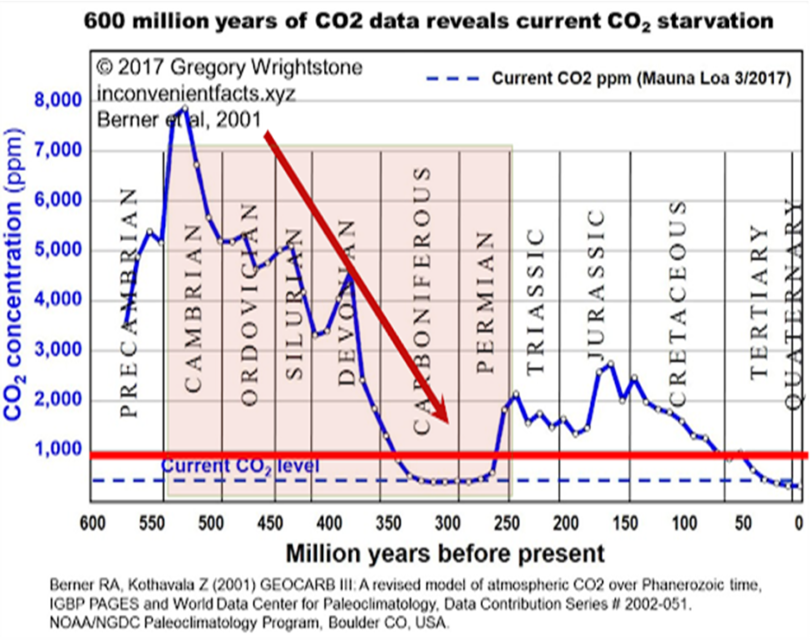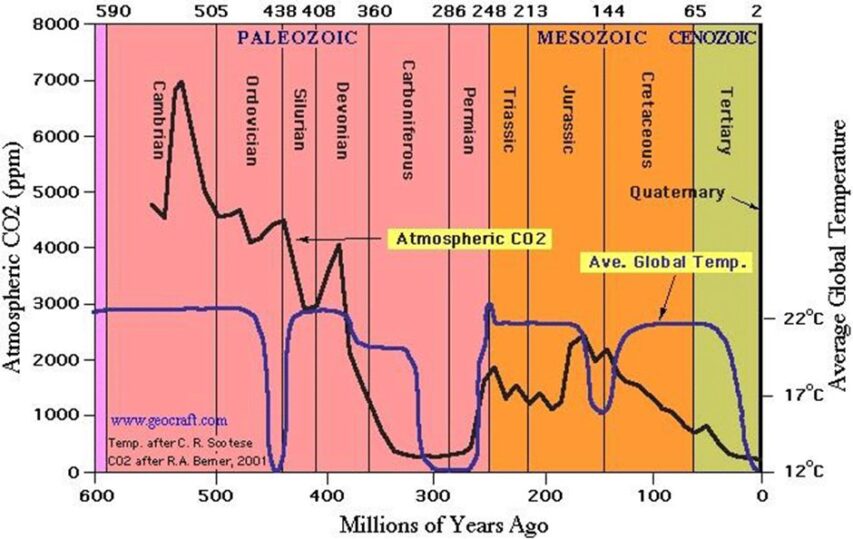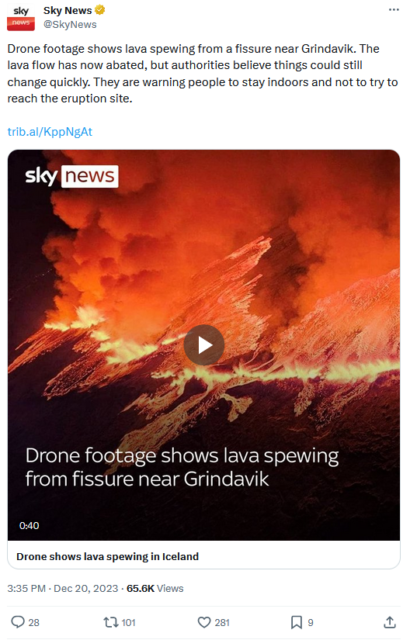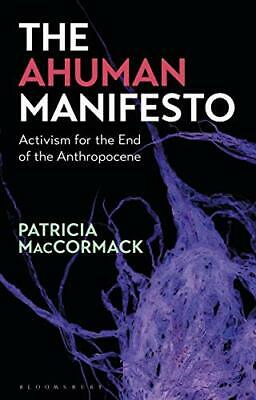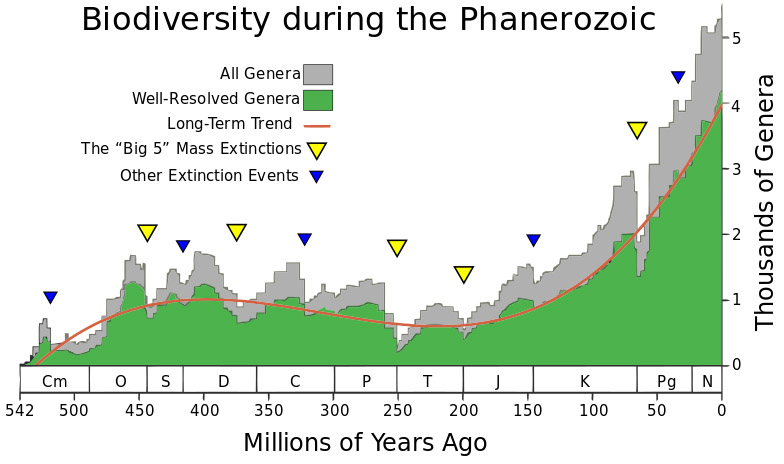In my youth, I shared a house with some communists of the very old-fashioned variety. They believed in industrial production because it inevitably resulted in that finest flower of humanity, the factory worker, who would, ex officio, be a foot soldier of the Revolution. No Leonardo da Vinci or Mozart for them! They believed, rather, in the Soviet Union’s ever-rising production, or at any rate graphs of ever-rising production, of something called pig iron, which at some point would overtake that of the United States and Western Europe combined, to the enormous benefit, of course, of the indigenous people of the Siberian tundra. They couldn’t see a landscape without wanting to garnish it with a factory chimney belching smoke, the blacker the better, as a symbol of what they called Man’s triumph over Nature (early communist propaganda and iconography were full of chimneys belching black smoke). They thought of Nature as an enemy, as a malign obstacle to be wrestled with and overcome, or as an evil conscious force obstructing Mankind’s progress to a glorious and infinitely abundant future. The extinction of animal species was welcome to them, not only if they, the extinct species, were in some way noxious to Man or deleterious to his advance, such as flies and snakes, but as symbolizing his increasing mastery over the surface of the Earth. Knowledge is power, and power is what they cared about.
Theodore Dalrymple, “A Matter of Respect”, Taki’s Magazine, 2019-12-31.
December 3, 2024
QotD: Old fashioned communists
May 7, 2024
But Carbon Dioxide is scary, m’kay?
Last week, Chris Morrison shared some charts that show atmospheric carbon dioxide to be nowhere near high enough to be a concern … in fact, compared to ancient atmospheric conditions, CO2 may be at a potentially concerning low point:
Last year, Chris Packham hosted a five-part series on the BBC called Earth, which compared a mass extinction event 252 million years ago to the small rise in atmospheric carbon dioxide seen in the last 150 years. He said he hoped the “terror factor” generated by his programme would “spur us to do something about the environment crisis”. But as we shall see, the only terror factor is having to sit through an hour-long film consisting of cherry-picked science data and unproven assertions in the hope of persuading us that the increase in global temperatures in the last 150 years or so is comparable to the rise in temperatures over a considerable swath of geological time. Great play was made of a 12°C rise in average global temperatures 252 million years ago as CO2 levels started to rise, although Packham fails to report that CO2 levels were already at least four times higher back then than in modern times. The “science” that Packham cloaks himself with on every occasion is hardly served by terrorising the viewer with what is little more than a highly personal political message.
Think of all that suffering and wastage, he says about the fourth great mass extinction. I don’t think we want a comparable extinction to the one that happened 252 million years ago on our conscience, he adds. Of course, Packham is not the first person to politicise the end-Permian extinction when most plant and animal life disappeared to be replaced eventually with what became known as the age of the dinosaurs. As we can see from the graph below, even though that extinction event coincided with an uptick in CO2 levels, the general trend over a 600-million-year period was downwards ending in the near denudation currently experienced today. But scientists note that the rise started some time before the extinction event, with most of the Permian characterised by very low levels of CO2.
It is obvious why the three other great extinctions are of little interest to modern day climate alarmists. The Ordovician extinction 445 million years ago occurred when CO2 levels were 12 times higher than today, the Devonian wipe-out happen 372 millions ago when CO2 levels were falling, while the later Triassic/Jurassic event 201 million years ago occurred at a time of stable CO2. Hard to see a pattern there suggesting rising CO2 levels equals a mass extinction event. The disappearance of the dinosaurs 66 million years ago is generally attributed to the impact of a giant meteorite, while the current sixth mass extinction exists only inside the head of the Swedish doom goblin, and need not detain us at this point.
Since Packham was essentially making a BBC political film promoting Net Zero, he inevitably started with the fixed view that all our current environmental problems are the fault of CO2. An intense period of volcanic eruptions that led to huge coal deposits catching fire increased CO2 levels and almost instantly sent temperatures soaring at the end of the Permian period. About 20 million years of rain subsequently followed, he observed, taking some of the CO2 out of the atmosphere and order it seems was restored. Certainly, CO2 resumed a small descent but levels remained almost as high, or for some periods higher, as those at the end of the Permian period for another 120 million years. Packham does not provide an explanation of what happened to the average global temperature at this time.
The graph above shows why he avoided the subject. Temperatures did rise at the end of the Permian period after a long decline, but only as far as previous highs recorded 200 million years earlier. They then stayed at those levels for most of the next 200 million years, throughout the age of the dinosaurs. Helped by the increased levels of CO2, this is considered one of the most verdant periods in Earth’s history.
December 26, 2023
The awe-inducing power of volcanoes
Ed West considers just how much human history has been shaped by vulcanology, including one near-extinction event for the human race:
A huge volcano has erupted in Iceland and it looks fairly awesome, both in the traditional and American teenager senses of the word.
Many will remember their holidays being ruined 13 years ago by the explosion of another Icelandic volcano with the epic Norse name Eyjafjallajökull. While this one will apparently not be so disruptive, volcano eruptions are an under-appreciated factor in human history and their indirect consequences are often huge.
Around 75,000 years ago an eruption on Toba was so catastrophic as to reduce the global human population to just 4,000, with 500 women of childbearing age, according to Niall Ferguson. Kyle Harper put the number at 10,000, following an event that brought a “millennium of winter” and a bottleneck in the human population.
In his brilliant but rather depressing The Fate of Rome, Harper looked at the role of volcanoes in hastening the end of antiquity, reflecting that “With good reason, the ancients revered the fearsome goddess Fortuna, out of a sense that the sovereign powers of this world were ultimately capricious”.
Rome’s peak coincided with a period of especially clement climatic conditions in the Mediterranean, in part because of the lack of volcanic activity. Of the 20 largest volcanic eruptions of the last 2,500 years, “none fall between the death of Julius Caesar and the year AD 169”, although the most famous, the eruption of Vesuvius in AD 79, did. (Even today it continues to reveal knowledge about the ancient world, including a potential treasure of information.)
However, the later years of Antiquity were marked by “a spasm” of eruptions and as Harper wrote, “The AD 530s and 540s stand out against the entire late Holocene as a moment of unparalleled volcanic violence”.
In the Chinese chronicle Nan Shi (“The History of the Southern Dynasties”) it was reported in February 535 that “there twice was the sound of thunder” heard. Most likely this was a gigantic volcanic explosion in the faraway South Pacific, an event which had an immense impact around the world.
Vast numbers died following the volcanic winter that followed, with the year 536 the coldest of the last two millennia. Average summer temperature in Europe fell by 2.5 degrees, and the decade that followed was intensely cold, with the period of frigid weather lasting until the 680s.
The Byzantine historian Procopius wrote how “during the whole year the sun gave forth its light without brightness … It seemed exceedingly like the sun in eclipse, for the beams it shed were not clear”. Statesman Flavius Cassiodorus wrote how: “We marvel to see now shadow on our bodies at noon, to feel the mighty vigour of the sun’s heat wasted into feebleness”.
A second great volcanic eruption followed in 540 and (perhaps) a third in 547. This led to famine in Europe and China, the possible destruction of a city in Central America, and the migration of Mongolian tribes west. Then, just to top off what was already turning out to be a bad decade, the bubonic plague arrived, hitting Constantinople in 542, spreading west and reaching Britain by 544.
Combined with the Justinian Plague, the long winter hugely weakened the eastern Roman Empire, the combination of climatic disaster and plague leading to a spiritual and demographic crisis that paved the way for the rise of Islam. In the west the results were catastrophic, and urban centres vanished across the once heavily settled region of southern Gaul. Like in the Near East, the fall of civilisation opened the way for former barbarians to build anew, and “in the Frankish north, the seeds of a medieval order germinated. It was here that a new civilization started to grow, one not haunted by the incubus of plague”.
August 22, 2023
QotD: Megafauna extinction
Another marker to put down about the extinction of the varied megafauna. A lot of which went extinct just as human beings – or varied ancestors of – turned up in the same area. The usual bit being that we eated it.
There is, sadly enough, a common misconception about our ancestors. Nature loving, that Rousseauesque fantasy of just drinking the clear water, munching on the acorns that fall unbidden. That humans don’t thrive on acorns matters not a whit to those who share this fantasy of an Elysian past. The truth being that humans – and proto- – were the most vicious beasts out there. That’s why we survived to thrive. It’s not just modern day humans who would scale down a cliff to throttle babbie seabirds for the pot after all.
So too with the bargain bucket meal on legs just found:
Half-tonne birds may have roamed Europe at same time as humans
They roamed, we eated, they roamed no more. As with the arrival of the Maori in New Zealand and the exit of moas. The American horse disappearing about the same time Amerinds made it past the ice barriers into British Columbia and points south. Dodos and sailing ships and on and on around the globe. The major factor in megafauna going extinct being humans turning up to eat them.
Tim Worstall, “Crimea Fried Ostrich – And Then We Eated It”, Continental Telegraph, 2019-06-27.
March 5, 2023
The clear drawbacks of depending too much on oral history
In The Line, Jen Gerson explains why you need to exercise caution when dealing with oral traditions:
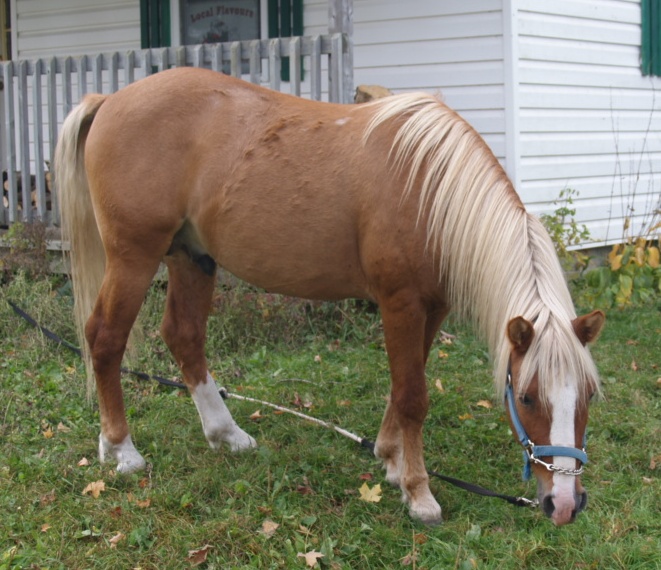
Lac La Croix Indian Pony stallion – Mooke (Ojibway for – he comes forth), October 2008.
Photo by Llcips09 via Wikimedia Commons.
A BBC travel feature published several weeks ago had the hallmarks of a classic progressive narrative. It was the tale of the “endangered Ojibwe spirit horse; the breed, also known as the Lac La Croix Indian pony, is the only known indigenous horse breed in Canada.”
The spirit horse was reduced to near extinction by European settlers who treat these magical creatures, deemed “guides and teachers”, as a mere nuisance to be culled and eliminated in favour of more profitable animals like cattle, or so the telling goes. A native breed of a beloved animal struggling to survive in the face of voracious colonial settlers.
Someone call James Cameron.
Unless you know a little evolutionary history, that is. In which case, you will already be aware that this story is pure pseudoscientific hokum.
Look, no one likes to be disrespectful about sensitive matters where the legitimately oppressed and aggrieved claims of First Nations peoples are concerned. This is a nation that is struggling to come to terms with its own horrific colonial past. This process is taking on many forms: witness the applause granted to singer Jully Black, who recently amended the national anthem “our home on native land”. Or, perhaps, the calls by one NDP MP to combat residential school denialism by passing new laws on hate speech — which would make questioning certain narratives not only an act of heresy, but also a literal crime.
Listening to stories, and respecting lived experiences and oral histories Indigenous people at the core of Canadian history and identity has given a new credibility to the traditional knowledge of First Nations people in academia, media, and in society at large.
But the story of the Ojibwe spirit horse is a clear example of the limits of oral history.
The horses now roaming the plains of North America are not a native species. The horse did evolve on this continent before migrating to Asia and Europe. However, the North American breed is believed to have been extirpated about 10,000 years ago (or thereabouts) during a mass extinction event that wiped out almost all large land mammals.
There is some evidence that isolated pockets of a native horse breed may have survived in North America much later than this, but the horses roaming about today are descended from those that were brought from Europe after the 15th century.
Of course, science is always evolving, but the overwhelming bulk of genetic and archeological evidence to date supports this theory. The native North American horse is long, long gone. The bands of horses freely wandering the backcountry are not wild, but feral; they’re the product of escaped or abandoned horse stock of distant European origin.
April 5, 2021
The Ahuman obsession
Theodore Dalrymple considers the work of an English professor who advocates for the extinction of the human race:
Professor MacCormack’s main idea seems to be that the only way to save the planet from destruction is for humanity not to reproduce itself and thereby to die out within a generation or two. She wants to make the world safe for the worms and the wasps, though her scheme would be hard luck on those species that parasitize only Man. They would have to die out too. But, as the Reverend Charles Caleb Colton put it in 1821, “Let no man presume to think that he can devise any plan of extensive good, unalloyed with evil.” If Man dies out, so too will Wuchereria bancrofti, one of the filarial parasites that cause elephantiasis, along with other such species, but I suppose that this is but a small price to pay for the immense benefit overall wrought by the extinction of Mankind.
Naturally, I sent for her latest book, The Ahuman Manifesto: Activism for the End of the Anthropocene. Thanks to the epidemic all the libraries were shut, though in other respects the virus’ efforts to end the Anthropocene were, from the professor’s rather special point of view, feeble or pathetic, with only 2,000,000 deaths so far and 6,998,000,000 to go. If I wanted to read the book, I would have to buy it.
I am an obsessional reader; that is to say, when I start a book I feel obliged to read it through from cover to cover. Moreover, I would rather read anything than nothing at all. Once in Los Angeles I was stuck in a hotel bedroom with nothing to read but the yellow pages (there were still telephone directories in those days), from which I learned a humiliating lesson. Books have long been at the center of my life, but I discovered how unimportant they are in the lives of most people. There was about half a page devoted in the yellow pages to bookshops, but scores to private detectives. No wonder Philip Marlowe chose Los Angeles as his place of work.
But Professor MacCormack’s book defeated me, not only sapping my will to read further but inducing a state almost of catatonia. It certainly cured me, at least temporarily, of my obsessional desire to finish any book that I have started. Her style made The Critique of Pure Reason seem as light and witty as The Importance of Being Earnest. She appears to think that the English plural of manifesto is manifesti rather than manifestos; I admit that it conjured up in my mind a new Italian dish, gnocchi manifesti.
Open the book at any page and you will find passages that startle by their polysyllabic meaninglessness combined with the utmost crudity. By chance, I opened the book to page 144 and my eye fell on the following:
The multiplicity of becoming-cunt as an assemblage reassembles the tensors upon which it expresses force and by which force is expressed upon its various planes and dimensions.
I have known deteriorated schizophrenic patients to speak more sensibly and coherently than this.
December 31, 2020
QotD: The “noble savage” belief system
… the whole weeks-long saga, which featured urban protestors appearing alongside their Indigenous counterparts at road and rail barricades throughout Canada, tapped into a strongly held noble-savage belief system within progressive circles. Various formulations of this mythology have become encoded in public land acknowledgments, college courses, and even journalism. The overall theme is that Indigenous peoples traditionally lived their lives in harmony with the land and its creatures, and so their land-use demands transcend the realm of politics, and represent quasi-oracular revealed truths. As has been pointed out by others, this mythology now has a severe, and likely negative, distorting effect on public policy, one that hurts Indigenous peoples themselves. In recent years, Indigenous groups have finally gotten a fair cut of the proceeds of industrial-development and commodity-extraction revenues originating on their lands. And increasingly, they are telling white policy makers to stop listening to those activists who seek to portray them as perpetual children of the forest. It is for their benefit, as much as anyone else’s, to explore the truth about the myth of harmonious Indigenous conservationism.
***When the ancestors of North America’s Indigenous peoples entered the New World some 16,000 years ago via Siberia, they hunted many of the mammals, reptiles, and birds, from the Arctic down to Tierra del Fuego. Mammoths, mastodons, and enormous ground-dwelling sloths, as well as giant bears, giant tortoises, and enormous teratorn birds with 16-foot wingspans — animals that had never had a chance to evolve in the presence of humans — were among the many species that disappeared from the Americas. Some medium-sized animals — such as horse, peccary, and antelope species — were also wiped out. But others survived: Bison and deer species, tree sloths, tapirs, jaguars, bear species, alligators, and big birds such as rheas and condors are, at least for the time being, still with us. The existence of these survivors, along with the relatively unspoiled forests, grasslands, and rivers seen by the first Europeans to enter the Americas, served to support the illusion that America’s first peoples had been maintaining what popular environmentalist David Suzuki calls a “sacred balance” with the natural world. Throughout history, however, humans killed animals that were tasty, numerous, and huntable. For kin-groups, staying alive meant making life-and-death cost-benefit calculations about where to send your berry-pickers and hunters. “Sacredness” had nothing to do with it.
This is not to say that the Indigenous peoples who migrated from Asia to the Americas were especially bloodthirsty (though Europeans typically reported that their hunting and fishing skills were excellent). In every known case where humans entered continents formerly uninhabited by our species, the bigger animals tended to disappear, since they provided the most sustenance per kill. The first humans to enter Australia some 70,000 years ago wiped out giant kangaroo species, rhino-sized marsupial herbivores, jaguar-sized marsupial carnivores, big flightless birds, and many other megafauna. The same thing would happen in Europe: After sapiens completed its occupation of that sub-continent some 30,000 years ago, the mammoths, woolly rhinos, giant deer, and lions they recorded in their cave paintings and carvings also disappeared.
Baz Edmeades, “The Myth of Harmonious Indigenous Conservationism”, Quillette, 2020-09-06.
November 11, 2019
Addressing the real extinction-level environmental threat
In the latest edition of the Libertarian Enterprise, L. Neil Smith points to what he thinks will be Donald Trump’s signature achievement: the United States Space Force.
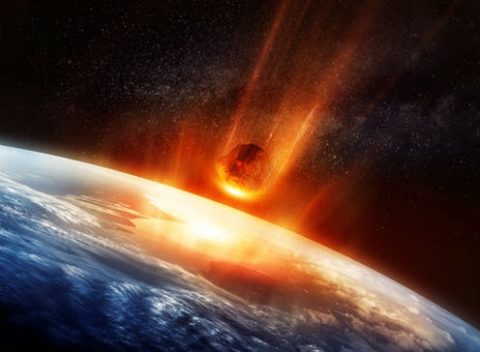
The biggest nuclear weapon ever detonated on Earth, Tsar Bomba, was 50MT. The Chicxulub impact was, at these numbers, 2 million times as powerful as Tsar Bomba.
Image and caption from Stephanie Osborn’s “Incoming: The Chicxulub Impactor, Part 3 — The Impactor & Effects” at https://accordingtohoyt.com/2019/10/31/incoming-the-chicxulub-impactor-part-3-%e2%80%95-the-impactor-effects-by-stephanie-osborn/
Many thoughtful observers believe that the most significant thing that Donald Trump has accomplished so far is his appointment of dozens of federal judges who share his philosophy of governance and I, amateur historian that I am, am inclined to agree with them — with one exception, that is, a little item that just might prove to be a thousand times, a million times, a billion times more important than anything else the Donald — or anybody else, for that matter — has ever done.
Most of us have become aware of the way that a relatively small piece of rock — an asteroid approximately the size of Manhattan Island or the Matterhorn — changed the course of life-history on this planet. It struck the Earth at 40,000 miles and hour, hitting what is now the northern coast of the Yucatan, generating a titanic explosion that ignited every plant standing above the ground, raising a tidal wave that swept over most of North America, and opening a chain of deadly volcanoes on the other side of the world, near India. The esteemed Bob Bakker to the contrary, the late, lamented dinosaurs, I believe, died from smoke inhalation.
Three quarters of all life on this planet, plant and animal, land and sea, was brutally exterminated by this “Cretaceous-Tertiary Event”, and apparently not for the first time. There was a much worse die-off between the Permian and the Triassic eras. The important fact, for you and me, is that there are thousands, if not millions of other lethal asteroids still out there, with which our vulnerable little blue marble is still playing a murderous game of roulette. It is only a matter of time before another “extinction-level event” occurs, possibly wiping out every last living entity on Earth. We can see plenty of evidence of that kind of phenomenon, that magnitude of destruction, elsewhere in the Solar System.
Take your precious carbon footprints and stuff them where the sun don’t shine, Greta. It is Donald Trump who has made the historic first move to prevent this very real cataclysm, and probably to extend the life of the human species indefinitely (an idea environmentalists hate), by calling for the organization of a United States Space Force. At this moment it still isn’t clear exactly what methods will work best to destroy or divert asteroids that threaten our home-world (I mention possibilities in my 2010 Ngu Family Saga novel Ceres), but it is something that must be done, sooner or later, probably by manned spacecraft.
The other important task for which we need a Space Force is to clean up the tens of millions of items of orbital debris that NASA and other agencies have very sloppily left circling over our heads. Remember when the Gemini astronauts simply threw those expensive Hasselblad cameras out the door? These objects range in size from particles of dust to cast-off booster stages which endanger satellites and spacecraft. A hunk of junk the size and shape of a small screw can damage solar panels, pressurized living and working spaces, as well as helmeted individuals in spacesuits, to whom that flying screw would be like a bullet through the head.
April 16, 2018
Mass extinction or mass genesis? “The net result is that many more species are arriving than are dying out”
We often hear laments for the addition of another species to the endangered list, but that’s not the whole story as evolutionary biologist Chris Thomas explains:
Animals and plants are seemingly disappearing faster than at any time since the dinosaurs died out, 66m years ago. The death knell tolls for life on Earth. Rhinos will soon be gone unless we defend them, Mexico’s final few Vaquita porpoises are drowning in fishing nets, and in America, Franklin trees survive only in parks and gardens.
Yet the survivors are taking advantage of new opportunities created by humans. Many are spreading into new parts of the world, adapting to new conditions, and even evolving into new species. In some respects, diversity is actually increasing in the human epoch, the Anthropocene. It is these biological gains that I contemplate in a new book, Inheritors of the Earth: How Nature is Thriving in an Age of Extinction, in which I argue that it is no longer credible for us to take a loss-only view of the world’s biodiversity.
The beneficiaries surround us all. Glancing out of my study window, I see poppies and camomile plants sprouting in the margins of the adjacent barley field. These plants are southern European “weeds” taking advantage of a new human-created habitat. When I visit London, I see pigeons nesting on human-built cliffs (their ancestors nested on sea cliffs) and I listen out for the cries of skyscraper-dwelling peregrine falcons which hunt them.
Climate change has brought tree bumblebees from continental Europe to my Yorkshire garden in recent years. They are joined by an influx of world travellers, moved by humans as ornamental garden plants, pets, crops, and livestock, or simply by accident, before they escaped into the wild. Neither the hares nor the rabbits in my field are “native” to Britain.
April 24, 2015
Framing every conservation issue in terms of “extinction” is counter-productive
Stewart Brand wants us to stop presenting so many conservation concerns in the headline-grabbing “Fluffy Bunnies At Risk!” format:
The way the public hears about conservation issues is nearly always in the mode of ‘[Beloved Animal] Threatened With Extinction’. That makes for electrifying headlines, but it misdirects concern. The loss of whole species is not the leading problem in conservation. The leading problem is the decline in wild animal populations, sometimes to a radical degree, often diminishing the health of whole ecosystems.
Viewing every conservation issue through the lens of extinction threat is simplistic and usually irrelevant. Worse, it introduces an emotional charge that makes the problem seem cosmic and overwhelming rather than local and solvable. It’s as if the entire field of human medicine were treated solely as a matter of death prevention. Every session with a doctor would begin: ‘Well, you’re dying. Let’s see if we can do anything to slow that down a little.’
Medicine is about health. So is conservation. And as with medicine, the trends for conservation in this century are looking bright. We are re-enriching some ecosystems we once depleted and slowing the depletion of others. Before I explain how we are doing that, let me spell out how exaggerated the focus on extinction has become and how it distorts the public perception of conservation.
Many now assume that we are in the midst of a human-caused ‘Sixth Mass Extinction’ to rival the one that killed off the dinosaurs 66 million years ago. But we’re not. The five historic mass extinctions eliminated 70 per cent or more of all species in a relatively short time. That is not going on now. ‘If all currently threatened species were to go extinct in a few centuries and that rate continued,’ began a recent Nature magazine introduction to a survey of wildlife losses, ‘the sixth mass extinction could come in a couple of centuries or a few millennia.’
The fossil record shows that biodiversity in the world has been increasing dramatically for 200 million years and is likely to continue. The two mass extinctions in that period (at 201 million and 66 million years ago) slowed the trend only temporarily. Genera are the next taxonomic level up from species and are easier to detect in fossils. The Phanerozoic is the 540-million-year period in which animal life has proliferated. Chart created by and courtesy of University of Chicago paleontologists J. John Sepkoski, Jr. and David M. Raup.
The range of dates in that statement reflects profound uncertainty about the current rate of extinction. Estimates vary a hundred-fold – from 0.01 per cent to 1 per cent of species being lost per decade. The phrase ‘all currently threatened species’ comes from the indispensable IUCN (International Union for Conservation of Nature), which maintains the Red List of endangered species. Its most recent report shows that of the 1.5 million identified species, and 76,199 studied by IUCN scientists, some 23,214 are deemed threatened with extinction. So, if all of those went extinct in the next few centuries, and the rate of extinction that killed them kept right on for hundreds or thousands of years more, then we might be at the beginning of a human-caused Sixth Mass Extinction.
March 2, 2013
Ethical debates of the very near future: species de-extinction
Matt Ridley on the soon-to-be-possible reversal of species extinction:
The founders of Revive and Restore aren’t mainstream scientists, but they’re not people to be taken lightly, either. Stewart Brand and Ryan Phelan are a husband-and-wife team with a track record of starting unusual but successful organizations — in his case, the Whole Earth Catalog and the Global Business Network; in hers, the consumer-focused startups Direct Medical Knowledge and DNA Direct. They’ve attracted the interest of the pioneering Harvard University DNA sequencing and synthesis expert George Church.
Their argument is that it’s time to start tentatively trying de-extinction and thinking through its ethical and ecological implications. There are already projects under way to revive extinct subspecies like the European aurochs (a type of wild cattle) and the Pyrenean ibex, or bucardo. In the latter case, when the last female (Celia) was killed by a falling tree in 2000, her tissue was cloned. At least one fetus survived to term in a surrogate mother goat, but it died soon after birth.
A full species that’s been extinct for decades like the thylacine (Tasmanian tiger) or the passenger pigeon — the last one of which, Martha, died in the Cincinnati Zoo 99 years ago — will be a taller order, since the DNA from long dead specimens is fragmented. Yet Ben Novak, a young researcher working with the ancient-DNA expert Beth Shapiro at the University of California, Santa Cruz, has extracted passenger pigeon DNA from the toe pad of a museum specimen and sequenced it. Dr. Church hopes to use one of the newly invented letter-by-letter gene-replacement techniques, such as Talens or Crispr, to transform the genome of a related species called the band-tailed pigeon into that of a passenger pigeon.
August 30, 2012
Exaggerating your points to make them seem more important than they are
Geoff Chambers does a bit of Google searching to track down a few of the claims made in Stephen Emmot’s critically acclaimed one-man show “Ten Billion”:
The reviews were full of superlatives. The Times’ critic calls it “utterly gripping, terrifyingly lucid”; Time Out: “monumentally sobering”; Billington in the Guardian: “one of the most disturbing evenings I have ever spent in a theatre”; the Financial Times: “one of the most disturbing shows I have seen on a stage”; the Mail on Sunday “certainly the most scary show in London”. Almost all of them cite Emmott’s conclusion: “We’re f*cked”.
Here are some of the key “facts” (or “f*cts”) cited by Emmott and picked up by critics. (It is of course impossible to check whether the critics have quoted Emmott correctly, since no record of what he says exists):
1) A google search uses as much electricity as boiling a kettle.
2) It takes 3,000 litres of water to make a hamburger, (that’s 10 trillion litres of water annually to sustain the UK’s burger industry).
3) It takes 27,000 litres of water to make a bar of chocolate
4) Animal species are currently going extinct at a rate 1,000 times their natural level.
5) Bangladesh will be under water by the end of the century.
TL;DR for those who don’t feel up to reading the whole thing: 1) false, by a factor of 100. 2) true-ish, but massively misleading. 3) false, or Emmott eats humongous chocolate bars. 4) false, even though Wikipedia thinks it’s true. 5) false, the land area of Bangladesh has actually grown over the last 50 years thanks to land reclamation projects.
December 8, 2009
How to get rid of pesky dinosaurs
According to recent theorizing, you don’t incinerate ’em, you broil ’em:
The asteroid impact that ended the age of dinosaurs 65 million years ago didn’t incinerate life on our planet’s surface — it just broiled it, a new study suggests. The work resolves nagging questions about a theory that the impact triggered deadly wildfires around the world, but it also raises new questions about just what led to the mass extinction at the end of the Cretaceous period.
The impact of a 10-kilometre asteroid is blamed for the extinction of the dinosaurs and most other species on the planet. Early computer models showed that more than half of the debris blasted into space by the impact would fall into the atmosphere within eight hours.
The models predicted the rain of shock-heated debris would radiate heat as intensely as an oven set to “broil” (260 °C) for at least 20 minutes, and perhaps a couple of hours. Intense heating for that long would heat wood to its ignition temperature, causing global wildfires.

